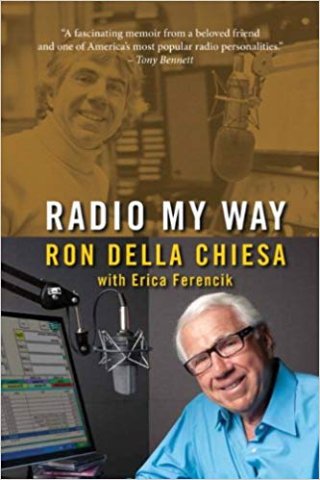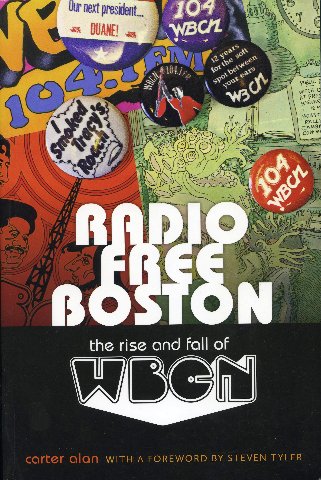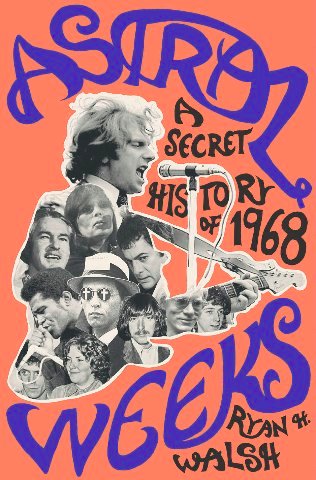Steve Nelson Gettin’ Home
An Odyssey Through the ‘60s
By: Charles Giuliano - Jul 13, 2018
Getting’ Home: An Odyssey Through the ‘60s
By Steve Nelson
Published by Massamett Media, 2018
364 pages, illustrated
$19.99 available through Amazon
ISBN 97817358158 51999
Last year in San Francisco we viewed a special exhibition of the Summer of Love. Recently, we attended a revival of the rock musical Hair. They both occurred in 1967.
The fiftieth anniversary of these and other events have evoked tributes, memoirs and celebrations. The 1960s were a time of turbulence, war in Vietnam, protest at home, and a broad spectrum of civil rights.
Many of these issues are as relevant today as they were then. There are government and legal efforts to roll back the clock erasing gains of the past half century.
Largely in response to youthful resistance and advocacy for change the 1960s represented an era of explosive creativity. This was expressed by the British Invasion of rock and the emergence of seminal American bands. The Counter Culture was disseminated through the underground/ alternative press and album oriented programming on then underdeveloped FM radio. Clubs emerged for rock music. The demand to see the most popular bands meant a transition to festivals and stadiums.
Recognizing trends in youth marketing hip entrepreneurs got rich. There were new alternatives for individuals transitioning from colleges and graduate programs. It became possible to earn a living in the arts and media. One didn’t have to pursue a suit and tie career in the straight world of our parents.
With relatively cheap rent in poor urban neighborhoods one could get high with the help of your friends. The pill changed things often fueled by a few tokes. For guys who managed to evade the draft it was a time of drugs, sex, and rock ‘n’ roll.
On many levels Steve Nelson, a Harvard Law School graduate, Draft resister, and manager of the seminal rock club The Boston Tea Party, was in the thick of it. His memoir “Gettin’ Home: An Odyssey Through the ‘60s” recalls Boston's groovy zeitgeist.
A native of Long Island and graduate of Cornell University, he spent three years at Harvard Law School and then a post graduate year at what became The Kennedy School of Government. Those intense student years didn’t allow for much hanging out in Harvard Square.
Trying to stay a step ahead of the Draft Board with student deferments he then took a job with NASA in Washington, D.C. To help secure his job he was admitted to the Bar but had little interest in a career in law. His Draft Board did not view NASA as part of the defense industry. That initiated a series of letters that began “Greetings.” How that ended is discussed at length in the book.
The Nelson book adds to a few insightful studies of the alternative culture of Boston in the 1960s.
In 2011 former WBCN and WGBH on air personality, Ron Della Chiesa, published “Radio My Way: Profiles from Jazz, Opera, the Great American Songbook and More.” A slim picture book “Images of America: Boston Radio 1920-2010” (2011) was published by Donna L Halper. In 2013 a former DJ, Carter Alan, published “Radio Free Boston: The Rise and Fall of WBCN” (with a foreward by Steve Tyler).
There has been enormous media interest in the recently published “Astral Weeks: A Secret History of 1968” by Ryan H. Walsh. There was indeed a lot going down in Boston during that seminal year.
Having survived Induction Day Nelson returned to Cambridge. As he puts it on page 211 (out of 364) “I found a cheap one-room apartment at the end of Mt. Auburn Street near Putnam Circle.” From there begins the narrative of his role in Boston's rock history.
Having put the law behind he got a job making sandals. He also briefly wrote a legal advice column starting with the first issue of Avatar. That caught the attention of Ray Riepen a Kansas City lawyer and friend of Jesse Benton, daughter of the artist Thomas Hart Benton. She asked Riepen to help her guru, Mel Lyman, to get a divorce in order to marry her.
The Lyman Family, in 1965, started Filmmakers Cinematheque to show underground movies. Lyman had met and crashed with Jonas Mekas which led to aspirations to make films. The venture wasn’t doing well. Riepen, with David Hahn, bought out their interest.
On January 20, 1967 The Boston Tea Party opened in a South End building constructed in 1872 as a Unitarian meeting house. The land it stands on was donated to the Unitarians by wealthy Boston merchant John Gardner, whose son Jack married famed socialite Isabella Stewart.
Enticed by the prospect of another lawyer with a taste for rock, after Riepen bought out Hahn, he hired Nelson to manage the club. That came with a company owned VW van. It was essentially a blank check with a lot of upside.
Riepen had other fish to fry and left Nelson in charge of what proved to be a landmark in rock history. A heady mix of blues, British, American and local bands passed through. During early years of struggle it became home to New York's The Velvet Underground and Boston's J. Geils Band. Riepen balked at what was paid for a weekend of Britain's Jeff Beck Band.
A veteran of the legendary Yardbirds the guitarist formed a band with vocalist, Rod Stewart, bass player, Ron Wood, and drummer Ansley Dunbar. Talk about bang for the buck and rock history but Riepen just didn’t get it.
He was busy building a media empire. That entailed convincing FM pioneer and eccentric, T. Mitchell Hastings, to allow programming rock music on WBCN. With a rock club and radio station Riepen then bought an interest in the alternative weekly The Cambridge Phoenix.
Having established The Tea Party as an artistic success and money maker it was time to renegotiate. Nelson wanted a raise and piece of the action. When Riepen wouldn’t budge Nelson quit. He was replaced by Don Law, son of a legendary Columbia Records executive. The senior Law recorded blues giant Robert Johnson who died young.
Riepen cashed in and drifted into the fog of memory. Don Law moved the club to Lansdowne Street, in what had been The Ark, behind Fenway Park. He became the foremost promoter of rock concerts in New England until the industry changed and was consolidated.
These final pages, for me, were compelling. It was a history we have often discussed including a four part extensive interview in Berkshire Fine Arts. The book accurately describes our first meeting when, briefly, I was design director of Boston After Dark. The history and anecdotes of his involvement with so many musicians and bands deserves more than 122 pages.
Of particilar interest is his promotion of bands comprising The Bosstown Sound and its aftermath. These in part included Orpheus, The Bagatelles, Ultimate Spinach, The Beacon Street Union, and The Hallucinations. There were also now forgotten bands he later booked for The Woodrose Ballroom catering to college students in the Pioneer Valley.
In discussion with him Nelson insists that the book is a memoir and not a history of Boston’s counter culture and media. It is the tale/ saga “Odyssey” about coming of age in the 1960s. Referencing Homer, he makes a poetic connection that, like Odysseus, his ten year journey began in Ithaca, or Cornell. For those of his generation there are numerous connections and flashpoints.
These include the form of where were you and what were you doing when…?
The most shocking and poignant of these flashbacks involved visiting the Patisserie, a Harvard Square hangout, to enjoy coffee and a croissant while reading the Times. Because of distractions he read the paper later that day.
Ancash earthquake of 1970, also called Great Peruvian Earthquake, originated off the coast of Peru on May 31, 1970. It resulted in 66,794–70,000 dead; and 50,000 injured.
This tragedy boomerangs the reader back to the first chapters of the book. On June 19, 1961, then 21, Nelson flew from LaGuardia to Lima. That was followed by a barf inducing, prop driven flight on a DC-6 flown by Aerolineas Perunanas.
The final destination was the mountain village of Vicos high in the Andes. He would spend the summer doing field research with Cornell professor Allan Holmberg who led a group of students. With just one course in anthropology he applied for the program. The very village where he had such a remarkable experience was devastated by the earthquake. Going native, chewing cocoa leaf, and living on potatoes provides poignant and insightful reading.
It is said that if you remember the 1960s you didn’t really live them. Relying on field notes and other archived materials the chapters on Peru, law school, and even the rock years are truly remarkable for their detail.
For example, he reports on when he and his wife Jan first enjoyed a meal together circa 1970 at her favorite cheap diner. For $6.95 he had the roast beef and she had turkey croquettes. How many people can remember what they ate on a date almost 50 years ago?
There are times, however, when there is too much information particularly about former girlfriends. We learn a lot about Beth, a freshman at Radliffe, whom he met in the Yard during the first year of law school. She was from a socially prominent family. Page 140 shows them dressed for a debutante ball. Her parents did not approve of the relationship.
On a first name basis the acknowledgments thank “Susie, Szusza, Beth and Barbara, for helping a boy to become a man. ‘Though we’re apart, you’re part of me still’ (Fats Domino).”
All of our former girlfriends, brief and long term, from the 1960s are now most likely grandmothers.
While fondly recalling the discipline of the rigorous Socratic method at Harvard he describes himself as an apathetic student. Early on he realized that he wasn’t interested in a career in law. While classmates spent summers as interns in law firms, and competed to become clerks or qualify for the Law Review, he thought otherwise.
After the first year he summered in Santa Monica where we has a waiter at night and body surfed by day. The account of that adventure, as are many others, is flavored with the Beach Boys. He often tells us about hit singles and emerging groups. It was a deep interest that was an asset when managing the Tea Party. Unlike that other lawyer he had an ear for music.
His notable accomplishment at Harvard Law School was as a member of a team participating in the grueling Ames Competition. Under difficult circumstances his team won. That was a singular accomplishment and is widely viewed as a key stepping stone in the profession. In addition to the intensive participation in the competition after it was over he had to cram for exams.
By his account he learned more from the Ames experience than classes in corporate law. Over the years it has been best not to argue with him.
Moving on from law and past rock ‘n’ roll Nelson applied his unique skills to a range of entrepreneurial activities. This entailed ventures in media, marketing and video production. In 2011, he was appointed to the Board of Directors of Wired West, a cooperative of many small rural towns in Western Massachusetts. The mandate is to bring fiber optics to regions without access to broadband internet service.
I have known Steve and Jan for fifty years. We have been through a lot together. This book revealed much I didn’t know that was never discussed. It was particularly moving to learn of his liberal parents. They had a difficult relationship including years when she was the sole earner and he was in poor health. I knew and admired his mother. His parents, and she in particular, gave him unquestioning support.
It was moving to recall the stray dog who wandered into the Tea Party and fell asleep. B.B. King was performing that night. Steve took the street wise dog home and named him B.B. He was truly Steve's best friend and I loved Mr. B. like a brother. We were tight.
It was a groove to hang with the hound as well as encounter Kenny Greenblatt, Bob Driscoll, Master Blaster, Wolf man, Lou Reed, Willie "Loco" Alexander, Harry Sandler, Eric Clapton and so many musicians and hipsters.
As I wrote when he campaigned for Cambridge City Council back in the day: "Well Steve you have my vote."





